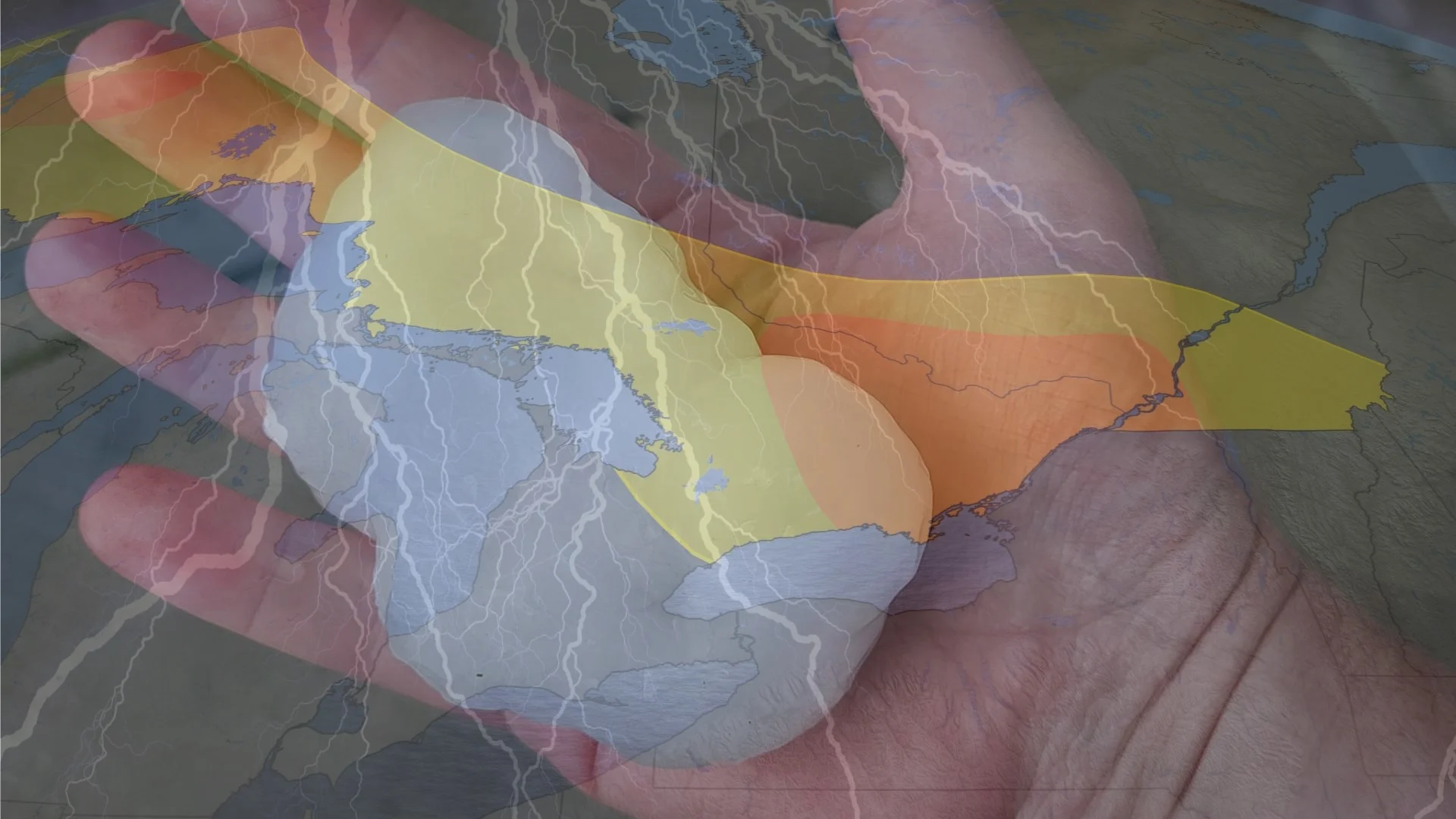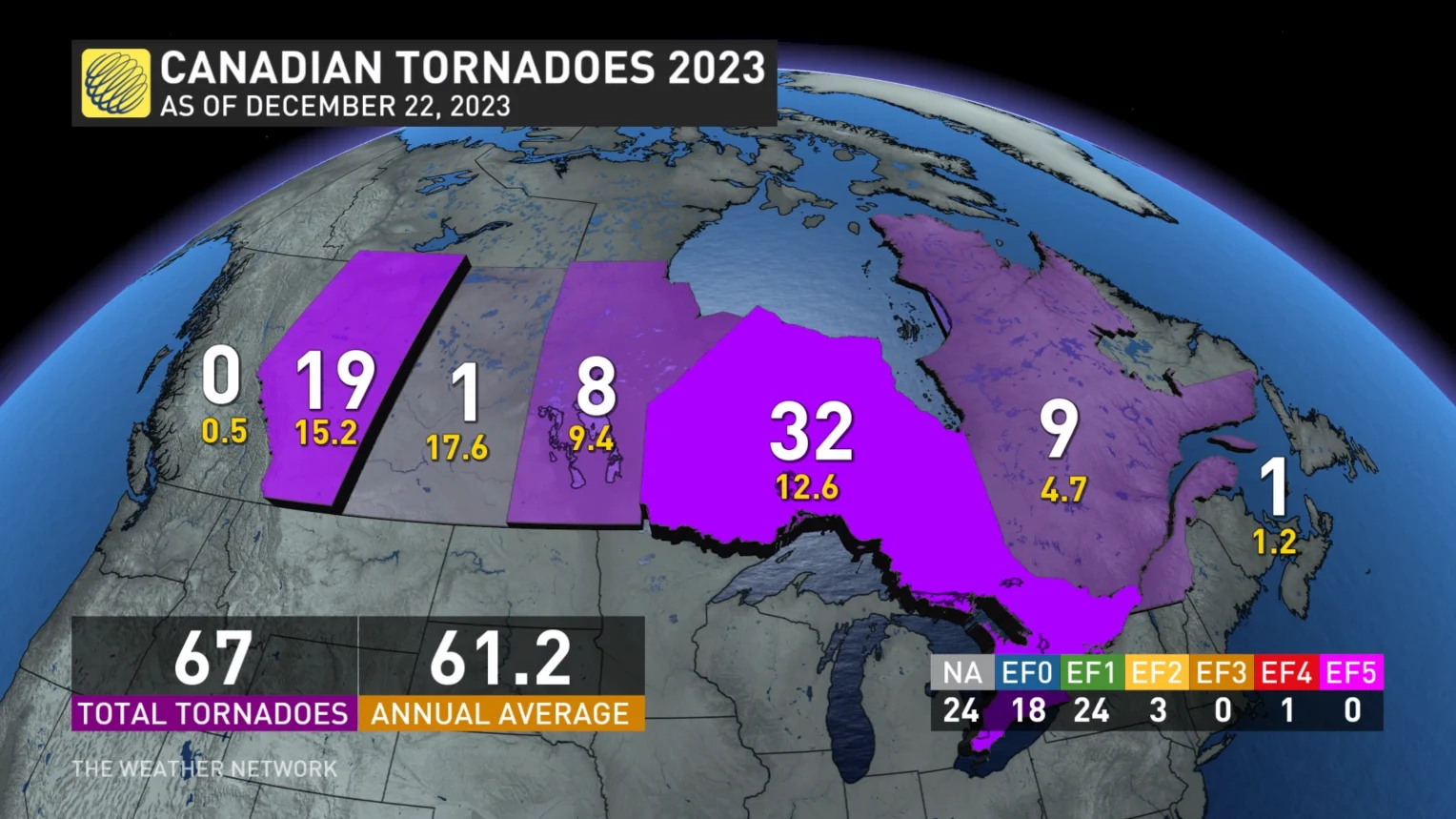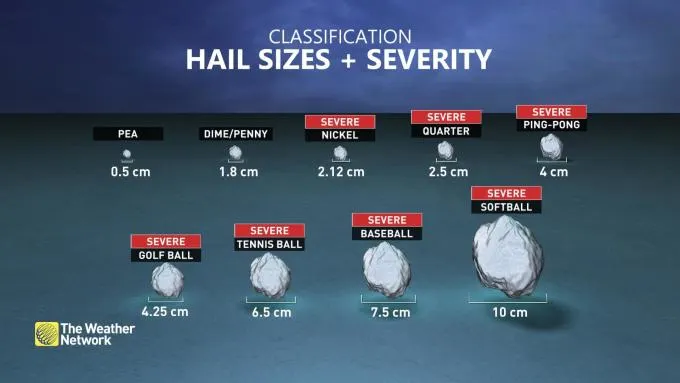
2023 was the year of massive hail across North America
This was a bad year for hail. Thunderstorms dropped baseball-sized hail in Ontario, and an Italian hailstone so large it nearly toppled the world record.
A year of extreme weather slammed Canada and countries around the world in 2023. Amid the chaos of fires and floods, many communities endured an unusual and rather terrifying problem: 2023 turned out to be the year of giant hail.
We saw thousands of reports of “very large” hail across the U.S., Canada, and around the world this year, measuring about 5 cm in diameter or larger. That’s the size of a hen’s egg.
The hail grew so large in some areas that it smashed all-time records for the biggest hailstones ever measured.
DON'T MISS: Canada's largest recorded hailstone fell in Alberta

This summer saw a busy severe thunderstorm season across Canada even if there was an unusual lack of tornadoes touching down across the Prairies.
Combined, the three Prairie provinces only saw 28 tornadoes in 2023, a surprisingly low number given that Alberta endured one of its largest one-day tornado outbreaks on record.
But the storm-starved heartland didn’t come away unscathed. Manitoba witnessed hail as large as baseballs this summer. The CBC reported in early August that Manitoba had seen more than twice its usual number of hailstorms by the second half of the summer.
The focus of the year’s severe weather activity centred on southern Ontario, which endured multiple significant hailstorms in 2023.

SEE ALSO: Success of Northern Tornadoes Project spins off new hail counterpart
An intense supercell rolled across the National Capital Region on July 28, pelting the area with hail the size of golf balls and larger. A few days later, another supercell thunderstorm hit the Kawartha Lakes area, shattering windows with hailstones larger than golf balls. One resident in Sunderland sent in a photo of a hailstone the size of a baseball.
WATCH: Large hail hammers Ottawa in July
U.S. witnesses more than 1,000 very large hailstorms
This was an especially rough year south of the border. The U.S. Storm Prediction Center (SPC) meticulously documents all reports of damaging winds, large hail, and tornadoes across the United States.

A typical year in the U.S. would see nearly 6,700 reports of severe hail which measures about 2.5 cm in diameter, or the size of a quarter. About 700 of those hailstones qualify as “very large” with a diameter of about 5 cm or larger, and the agency normally records about 200 reports of hailstones the size of baseballs or larger.
While the total amount of the year’s hail reports landed slightly above average across the U.S., a whopping 15 percent of all the severe hail reported in the U.S. in 2023 qualified as very large.
LEARN MORE: How hail – of all shapes and sizes – forms, falls from sky
The SPC gathered 1,077 reports of very large hail through December 22, 2023, which is more than 150 percent higher than average for a typical year. Several months saw their all-time record for the most reports of very large hail ever collected.
A hailstone measuring nearly 14 cm in diameter fell on the town of Lela on the Texas Panhandle, taking the prize as the largest hailstone reported in the U.S. in 2023.
Even accounting for the preliminary nature of the data and differences in reporting methods, 2023 is on track to secure a spot as one of the most—if not the most—intensive years for hail on record across the U.S.
The uptick in large hail across the U.S. and southern Ontario is likely the result of thunderstorms developing in exceptionally moist environments with strong wind shear capable of supporting supercells. Rotating updrafts in supercell thunderstorms are necessary to support the weight of very large hailstones.
Immense European hailstone nearly topples world record
North America isn’t the only place we saw exceptional hail this year.
Severe thunderstorms are common across Europe during the warm season, with some parts of the continent experiencing supercell thunderstorms that would rival the most intense torrents we see here at home.
Researchers with the European Severe Storms Laboratory (ESSL) work to document as much severe weather across Europe as possible, recording tornadoes, hailstorms, and derechos that sweep across the continent.
The ESSL announced in July that a hailstone that fell on Azzano Decimo, Italy, broke the continental record with a mind-boggling diameter of 19 cm. This nearly toppled an 18 cm stone that hit Vivian, South Dakota, in July 2010, to claim the world record for the largest hailstone ever collected.











